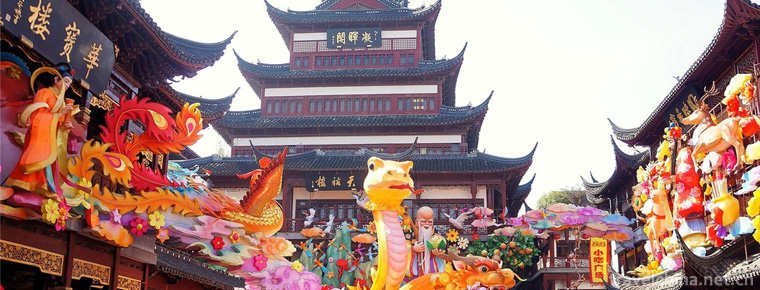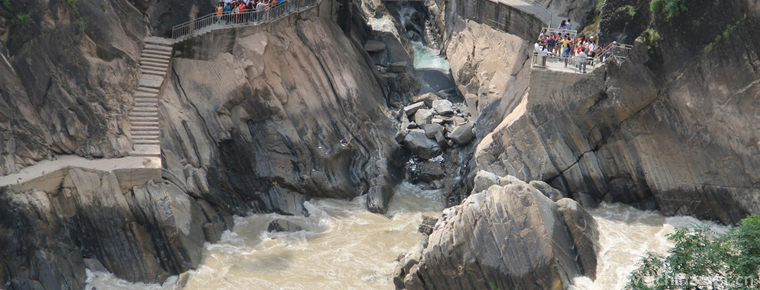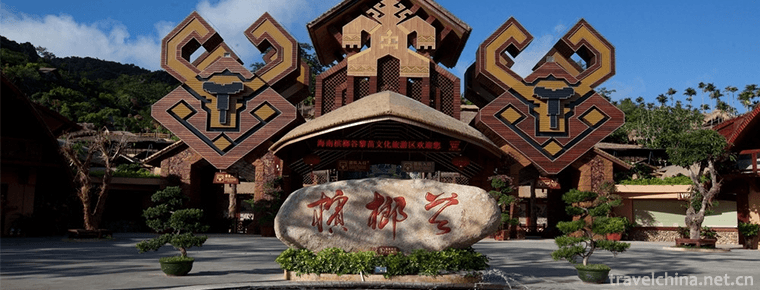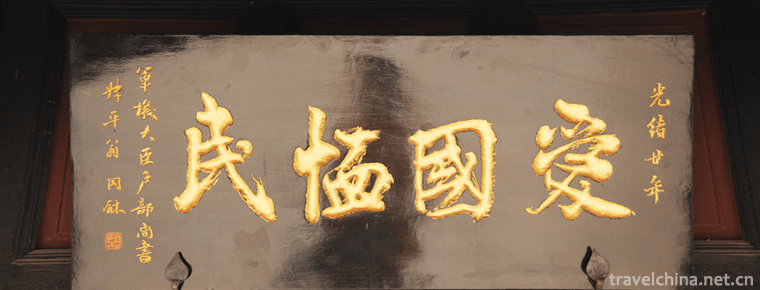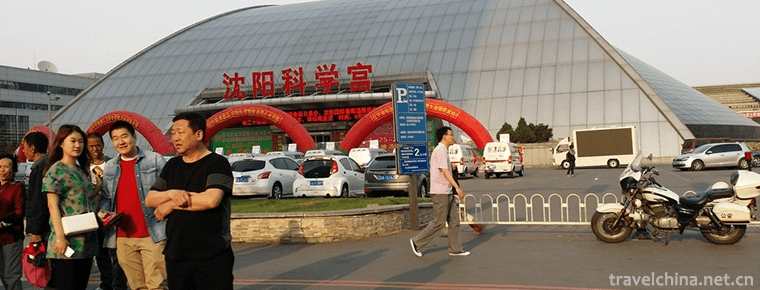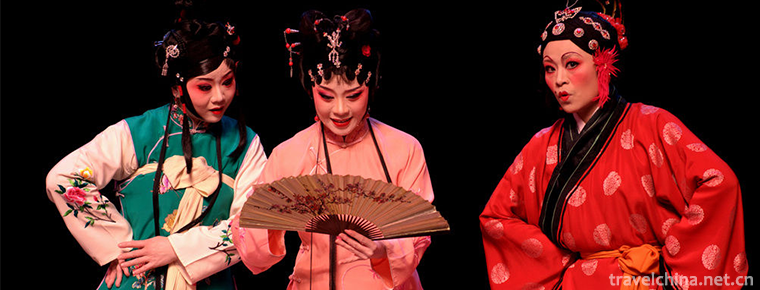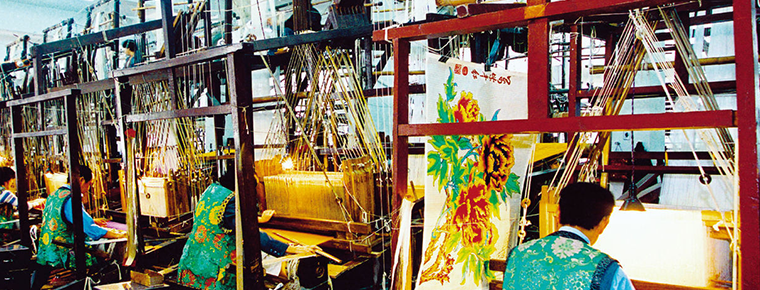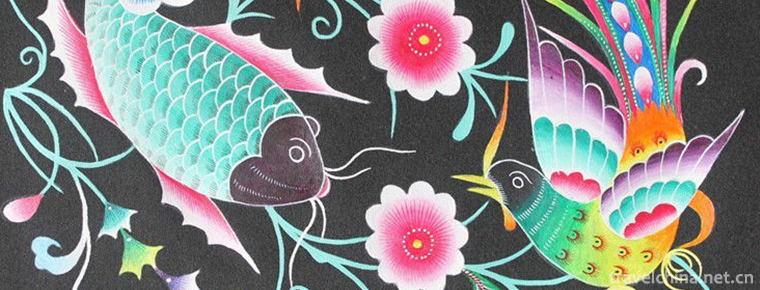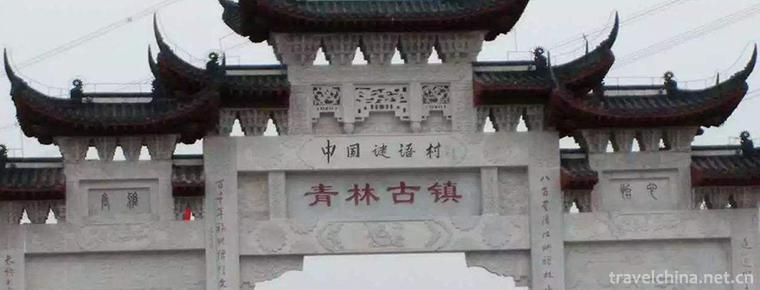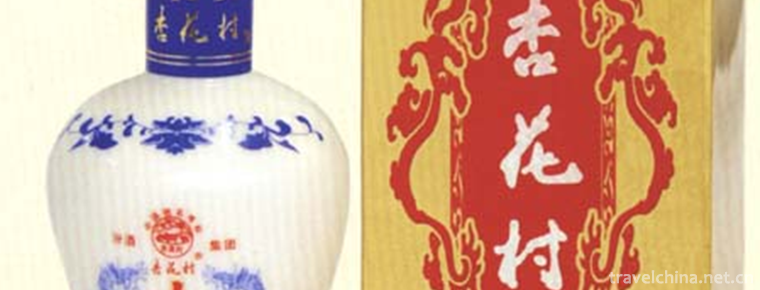Mianshan Scenic Area
Mianshan Scenic Spot is a national AAAAA class tourist attraction, a key scenic spot in Shanxi Province, the birthplace of Ching Ming Festival (Cold Food Festival), the Ching Ming Cultural Research Center for Ching Food, and the Ching Ming Cultural Museum for Ching Food. Mianshan Scenic Spot crosses the boundaries of Jiexiu, Lingshi and Qinyuan, with the highest altitude of 2560 meters. It is a branch of Taiyue Mountain.
Mianshan originated in the Spring and Autumn Period when Jiezi and his mother lived in seclusion and were burned on the mountain. So Mianshan is also known as Jieshan. As early as the Northern Wei Dynasty, Mianshan had temple buildings. At the beginning of Tang Dynasty, it had a considerable Buddhist Zen forest. Mianshan Scenic Spot has various styles of archaized buildings. From the architectural point of view, Mianshan Archaized Architecture not only takes the advantages of the previous buildings, but also combines the modern creativity of designers and builders to form the unique style of modern archaized buildings.
In Mianshan Mianshan Scenic Area, religious buildings include temples and palaces; garden buildings include pavilions, terraces, pavilions, porches, pavilions, pavilions and archways; and ancient relic buildings include ancient Yingmen, Chengchi, Yingzhai, etc., which can be used as ancient architecture museum (garden). Mianshan Scenic Area has 14 major scenic spots, more than 360 small scenic spots: human landscape: Longtou Temple, Longji Ridge, Li Guyan, Beehive Spring, Daluo Palace, Tianqiao, Yidouquan, Zhujiawa, Yunfeng Temple, Zhengguo Temple, Jiegongling; natural landscape: Qixian Valley, Guteng Valley, Shuitaogou.
Legend has it that in the Spring and Autumn Period, Jie Zitui, a nobleman of Jin Dynasty, fled with Chung Er, the prince of Jin Dynasty, for more than ten years, and cut the meat from his thighs to Chung Er when he was hungry. After Jin Wengong returned to the kingdom as the monarch, he took his mother to Mianshan to live in seclusion. Jin Wengong sent people to search for him. In order to compel him to push the mountain out, he set fire to the mountain, but he pushed Jiezi and his mother to death. Wen Gong learned that with grief and indignation, he ordered Mianshan to be changed to Jieshan and Yangxian to Jiexiu. Also will "encircle Mianshan Mountain and seal it, as recommended Tian", in order to show nostalgia. And on the day before Qingming Festival, the day when Jiezi was burned, no fire was allowed. Every household could only eat cold food, which is called "Cold Food Festival".
Mianshan had Taoist activities as early as spring and autumn. As one of the pioneers of Taoism, Jie Zitui practiced the simple Taoist thought of pure inaction, indifference to fame and fortune and selfless devotion. In the biography of the immortals written by Liu Xiang in the Western Han Dynasty, Jie Zitui has been respected as a Taoist god. Yan Daoyuan of the Northern Wei Dynasty in the Annotation of the Book of Water, Shitongshui, that is, Mianshan in Jiexiu County, flows through the west of Shitongsi Temple. Shitong Temple is the temple of Jiezitui. Later, people went to Mianshan to seek seclusion and ancient times, to visit the sages and to seek Taoism. By hanging on the sages, the activities of Mianshan Taoists became more and more prosperous. In 2008, Mianshan was named "the hometown of cold food culture in Qingming Dynasty" by the Chinese People's Association.
Mianshan is located in the southwest end of Taiyuan Basin, the north side of Taiyue Mountain and the Bank of Fenhe River. Its coordinates range from 110 degrees 44'10'-112 degrees 10'14'in the east longitude to 36 degrees 50'01'-37 degrees 11'04' in the North latitude. It stretches for a hundred miles, enters Lingshi County in the West and adjoins Qinyuan County in the south. The planning area of scenic spots is 135 square kilometers and the jurisdiction area is 40 square kilometers. The highest altitude is 2566.6 meters, and the relative altitude is more than 1766 meters. Jiexiu Station, the second marshalling station of Nantongpu Railway, the first section of Dayun Highway and 108 National Highway cross the county border. It is 137 kilometers north from Taiyuan, the capital of Shanxi Province, and 135 kilometers south to Linfen, which is the North-South transportation hub of Shanxi Province.
geology
Mianshan is composed of Sinian and pre-Sinian, Ordovician and Cambrian systems. It began about 190 million years ago and ended more than 400 million years ago. Limestone, dolomite and sandstone were deposited after the earth was submerged by sea water. The mountain body continued to rise, the valley declined relatively, the material accumulation continued to be accepted, and the subsidence rate was greater than the accumulation rate. 。 It belongs to eroded structure type with strong rise of neotectonic movement in high mountain area of eroded structural limestone. Most of the valley walls have karst caves, which develop along the layers. Earthquakes are the main characteristics of neotectonic movement.
hydrology
Groundwater in Mianshan is mainly stored in limestone fissure caves. The total length of Mianshan Shitong water in Yangou Spring is 7.5 kilometers, and the flow rate is 0.2-0.5 cubic meters per second. According to the unified analysis and testing by the provincial competent authorities, it belongs to the clean level. Mianshan not only has springs in its ditches, but also springs along its top teahouse, Li Guyan, Wulong Temple, Fangquan, Longchi, Yiguquan, Jijiazhuang and other places. How high is the mountain and how high is the water?
climate
Mianshan is a temperate continental climate with distinct seasons. There is plenty of sunshine in spring and more rainfall in summer.
It's cool and pleasant in autumn and snowy in winter. January is the coldest with an average temperature of 5.1 C, June and July are the hottest with an average temperature of 24 C. The average annual temperature is between 10 and 9 degrees Celsius. Temperature decreases with the increase of altitude. For every 100 meters elevation, the temperature decreases by about 1 degree. The temperature in sunny concave is relatively high. Annual precipitation ranges from 656.2 to 621.1 mm. The average annual relative humidity is 60%. Over the whole year, the southwest wind, with an average wind speed of 2.2 m/s. The wind is stronger in April and less in August. The scenery varies from season to season. It's suitable for sightseeing, especially in winter.
Dragon head Temple
Longtou Temple, formerly known as Tower Rock Head, was named after the Empty King Tower Court on the Loess Slope under the Rock. In the fifteenth year of Tang Zhenguan (641), when Emperor Taizong was lucky to drive the Mianshan Ritual Buddha, Shuanglong appeared and changed his current name. There are Yude Tang, Guandi Temple, Zhenwu Temple and Nantianmen. There are Marshal Ye Jianying's Comment on Mianshan, Zuo Zhuan Jiezi's Puyinlu, Quyuan's Nine Chapters, Song Tingkui's Mianshan Fu and Tang Taizong's Imperial Poetry Stele. These stone carvings are the main landscapes to appreciate Mianshan's thick history and culture. It's also a wonderful place to watch clouds and sunsets at sunset.
Longjiling, Jiezitui Mother and Son Statues, Health Park
Longji Ridge is named for its position on the back of the intersection of two dragons. The tourist area mainly exhibits Li Tang military culture and Taoist health culture. There are more than 20 scenic spots, such as Longzhi, Longxiuquan, Longxu Waterfall, giant statues of Jiezi pushing mother and son, Zhenwu Hall, Bagua Garden and Yangzhi Pavilion. The statue of Zitui Mother and Son is vivid and vivid, which reproduces the scene that Jiezi pushed his mother back to Mianshan. Mianshan Tang Camp is the only ancient camp of Tang Dynasty in China. The historical relics such as the battle platform and flag-planting stone tell the story of Li Shimin, the king of Qin, who deployed troops to supervise the battle. The spiritual spirit of Mianshan has attracted many immortals and saints. Only here are more than ten caves of practice of ancient sages, such as Bozichang, Pengzu, Ziqiao, Huatuo, Zhongli of Han Dynasty, Lu Dongbin, Chen Xuan, and so on. They are the oldest health preservation places in China. Health preservation source makes a concise and vivid introduction to health preservation skill with stone tablets and pictures.
Li Gu Yan
Li Guyan, also known as Huangguyan, is a rare tourist attraction for Huangguyan monks in China. Here is the preservation of the Qing Dynasty Shunzhi 17 years (1660) Intermediate Liang Zhongyu "Xiu Li Guyan Ji" contained: "Mianshan rock famous Li Guyan. Legend has it that in the fifteenth year of Zhenguan (641), Princess Changzhao, Taizong sister of the Tang Dynasty, accompanied by the Buddha, ended the ceremony, burned it for a year, and died on Juejuan shore to help others, where later generations worshipped their statues.
Li Guyan is located on the west side of Longji Ridge. It is a huge natural cave with a length of more than 200 meters, a depth of more than 20 meters and a height of more than 30 meters. The temple hall is divided into upper and lower layers. Build a pavilion according to the mountains, with unique features. Among them, the temple hall includes the Emperor's Aunt Hall, the Sakya Hall, the Guandi Hall, the Dulong King's Hall, the Arhat Hall and the Three-Body Buddhist Hall.
Nine sculptures in the palace are all relics of the Tang Dynasty and are very precious. Huanggulou was the place where Li Gu practiced meditation at that time. Its setting and murals reproduced the style and features of the Tang Royal family. The origins of the other halls are all related to Aunt Li, which inherits many moving legends and stories.
The whole tourist area is situated in the shade of primitive trees. Clouds hang in the clouds and smoke, and the scent is clear and fragrant. It is a unique landscape of Mianshan tourist area. Therefore, for thousands of years, there has been a saying in Mianshan that "Qianyouyan, Wanyou Yan, the most beautiful is Li Guyan". In order to facilitate tourists, a sightseeing cable car has been opened in Shanglongji Ridge, which makes it very convenient and safe for people to go to Li Guyan.
Honeycomb Spring, Skyline Moon View
The honeycomb spring, also known as St. Ruiquan and Mother's Papilla, is a rare natural wonder. There is no unique hanging spring in China. Zhang Shangying, the Prime Minister of the Northern Song Dynasty, used to describe the mountain topography and landforms here as follows: "Water Sinus Beehive Spring, Mountain Deer (Granary) Top Round; Wind Blows Bag Valley, Cloud Covers Dustpan Sky". Tens of pairs of mossy stone milk on the huge cliff cliff wall are broken like pearls and clanking in the dripping pool, just like the sounds of mountains and rivers played by strings. During the reign of Kangxi in the Qing Dynasty, Fushan, a famous scholar in Shanxi Province, once compared this spring to the most correct method of Buddhism and the best cheese. Even Shenlong Naga could only taste one spoonful, not many greedy ones. Poetry Cloud: "Buddhist quieter, stone milk dragon pool. Qiongqiao Yin, Maniyu Xuangan. The merits and virtues of Hui Qian are eight and the body of law is three. A spoonful of gluttony, Naga is not allowed to be greedy." The scenic spot also includes Wangfeng Gate, Wulong Chao Mother's Palace, Four Seas Dragon King's Palace, Three Royal Pavilions, Wuyue Palace, Mazu Palace, Notre Dame Palace, Baxian Cave, Shangshan Ruoshui Arch and other scenic spots.
Da Luo palace tourist area
Daluogong Tourist Area, the local people commonly known as "Zhongyan". "Three Qing Dynasty, called Daluo". Daoism believes that the sky is 36 times heavy, and above 36 times is Daluo Tian. Therefore, this palace is Daluo Palace, which means the highest immortal palace.
The Daluo Palace is built on the hills, featuring outstanding pavilions, painted pillars and carved beams, with brilliant splendor. The total area of the complex is more than 30,000 square meters, consisting of 13 floors. The total height is 110 meters. Tourists praise it as "comparable to the Potala Palace", which is the first Taoist palace in the world.
The Daluo Palace was built at an unknown time. It is said that in the Spring and Autumn Period, Jiezi came to Mianshan to live in seclusion. There were traces of Taoist activities. Some temples had taken shape in the Eastern Han Dynasty. In the eleventh year of Kaiyuan (723) of Tang Dynasty, Emperor Xuanzong traveled south to the Quercus Valley to memorize the merits of the former pilgrims in Mianshan Mountain. He felt the grace of the Mianshan gods in protecting the Li and Tang Dynasty and ordered the palaces of Daluo to be built. After that, the official and folk repaired and repaired many times during Yuan You period of Song Dynasty, Wanli period of Ming Dynasty and Kangqian period of Qing Dynasty. It was burned by the Japanese army in 1940 and rebuilt on its original site in 1998 that Sanjia became the winner today.
This area includes the main hall of the Daluo Palace, the lecture altar, the Mixed Yuan Hall and the Qun Xian Hall. There are also Lingxiao Hall, Sanqing Hall, Money God Hall, Salvation Hall, Yuanchen Hall, Sanguan Hall, Five Old Kings Hall, Doumu Hall and other palaces. The exquisite painted sculptures of Tang, Song, Yuan, Ming and Qing dynasties in Mianshan are called "Dunhuang in Shanxi". The Tibetan Classic Pavilion is the largest collection of books in China's scenic spots. Woodcarving, stone carving and English, Japanese and Russian translations of the Tao Te Ching in the palace can be regarded as a cultural spectacle of the Tao Te Ching. There is a natural cave on the rock, and white clouds float out everyday in summer, so it is called "dolomite cave". There is a cave beside the cave called Baiyun Temple. The stone carvings of the Diamond Sutra in the temple are rare relics left over from the Tang Dynasty.
Footbridge
Flyover is named for its trestle built on cliff cliffs, which has a history of more than 1000 years. It is more than 300 meters long and 1 meter wide, 80 meters above the top of the peak and 300 meters below the bottom of the ditch, hanging over dangerous rocks. Every time the rain passes through the clouds, people pass over the bridge and the clouds fly under their feet, which makes people feel like they are walking on a level foot and drifting like immortals. The main buildings in the scenic area are Dongshen Palace, Zushi Palace, Qizhen Palace, Jellyfish Palace, hanging corridor and other scenic spots such as Bailong, Rabbit Bridge and Xumishi. There are practice holes of Kong Ming and Zhang Liang. In addition, there is the most dangerous military fortress in ancient China, Shile Village, which has a steep terrain and is easy to defend and difficult to attack.
The Dongshen Palace was the third year of Wude in Tang Dynasty (620). When Li Shimin and Liu Wuzhou of Qin Dynasty joined forces at Dussouyuan, Quercus Valley, they were blessed by Taiqing Moral Heaven. Li Shimin, Emperor Taizong of the Tang Dynasty, was deeply grateful for God. In the sixteenth year of Zhenguan (642), the imperial edict was restored. In Song, Yuan, Ming and Qing dynasties, the government and the people increased and renovated successively. It was burned by the Japanese in 1940. In 1998, Sanjia Company expanded its original site.
A bucket spring
Yidouquan is a naturally occurring stone spring, named for its ability to hold only one bucket of water. Legend has it that a long time ago Mianshan was short of water. In the beginning of the Yuan Dynasty, Tianzunyun swam here and sprinkled some water from the East China Sea with dust. There were many springs in Mianshan. The last drop was here to form a fountain.
Zhujiawa and Wolong Hotel
The Zhujiawa scenic spot in Mianshan is related to the rise of the Zhuming Dynasty, which is a "sacred site". It is said that in the late Yuan Dynasty, Zhu May 4th, father of Zhu Yuanzhang, the Ming Taizu, practiced here, praying for God to bless his children and grandchildren. As a result, his son Zhu Yuanzhang unified China under the protection of Lingbao Tianzun, became emperor and established the Daming Dynasty. In the eighteenth year of Hongwu, Zhu Quan, the seventeenth son of the emperor, was sent to Mt. Mianshan to thank him for building and repairing the Dongxuangong. This is the origin of Zhu Jiawa.
Zhu Jiawa is the Taoist arena of Lingbao Tianzun in the Upper Qing Dynasty. The left and right halls are the Ten-square Lingbao Hall and the Zhuxian Hall. On the western hill there is the Jade Emperor's Pavilion. In the 21st year of Jiajing (1542), Zhu Shizong built the pavilion here to pray for the everlasting stability of the Daming River. Underneath the rock is Wolong Hotel, originally from the Book of Changes, "Qianlong in the Yuan" and "see adults for their own benefit". In the Ming Dynasty, it was a mountain house. When the emperor of the Ming Dynasty was facing the mountains, he stayed here, so it was called Wolong Hotel.
Yunfeng Temple
Yunfeng Temple, formerly known as Baobo Temple, was named for its construction in Baobo Rock. Founded in the Cao Wei period of the Three Kingdoms, the eminent monk Digong began to operate and build, more than 1700 years ago. Sitting in the East and west, Baoweiyan is 60 meters high, 50 meters deep and 180 meters long. It is divided into two layers. It holds more than 200 palaces and halls in the abdomen. It contains two thousand years of historical civilization, which is "unique" in the world. The main scenic spots are Pilu Hall, Yuhuang Pavilion, Emperor's Hall, Wulong Hall, Digong Cave, Lugong Cave, Zhichao Cave, Wulongsong, Tiesuoling, and the Stele of Baobo Temple in Fenzhou, Tang Dynasty. The temple is dedicated to the local true God Jie Zitui and the real Buddha Emperor Buddha. Tian Zhichao was the first Buddhist in the Han Dynasty. His statue is a bony body. There are also many Tang, Song, Yuan, Ming inscriptions and sculptures in the temple, which have high cultural value. The bell hanging on the top wall of the abdominal rock makes the scene breathtaking and amazing. Tiesuoling is the oldest cliff-climbing railway in the world. Tiesuoling's cables and the ladder below were hanging before the Tang Dynasty, which was a dangerous way for the great poet He Zhizhang to climb mountains in that year. Long couplets inscribed by Fu Shan, a university scholar in the late Ming and early Qing Dynasty, in the ten years of Chongzhen (1637), the imperial plaque of "Ciyun Fayu" given by Emperor Guangxu in the third year of Qing Dynasty (1877), and the plaque of "holding abdomen and inhabiting clouds" inscribed by Zhang Ji, a famous contemporary scholar, are rare treasures.
Zhengguo Temple, the whole body of Sari
Mianshan was originally owned by Wulong Mother and Son. After Zhichao came to the mountain, Longmu gave the way of playing chess to Zhichao. Wulong converted to Buddhism and often listened to the empty King Buddha on the platform. Later, Wulong's power increased greatly, leaping across the opposite mountain, leaving five ravines on the mountain wall, so it was named Wulong Ji. The main temple in this district is called Zhengguo Temple. There are thirteen true statues of Baogu in the temple. Though they have gone through thousands of years, their skeletons are intact and they are quite spiritual. They are important cultural relics for the study of Mianshan's history, culture and geographical climate. In addition, there are Tongtianyunqu, Wulongsong, Mituo Hall, Notre Dame Hall, Guanyin Hall, the three main halls, Niangniang Hall, Wulong Hall and so on, which are magical in origin and have great experience in temple hall. Lingying Pagoda is the tallest Buddhist Pagoda in China's alpine monasteries, with nine layers of light and dark, up to 69 meters, high above the clouds and magnificent. Moreover, the terrain here is steep and the pines and cypresses are towering. It has become a unique tourist attraction in Mianshan.
Qixian Valley and Jiuqu First Line Tian Grand Canyon
Qixian Valley is a canyon winding upward and winding nine lines of day. The rocks on both sides are rugged, the streams at the bottom of the valley are rippling, and the sound is transmitted through the valley. More than ten ladders must be climbed to get through. Legend has it that Jiezi pushed his mother and son through here to reach the hiding place. The Fenghou pavilion was built when Wen Yanbo declared that Jiezi should be promoted to Jiehui Hou. It was ingeniously conceived, exquisitely crafted and had the atmosphere of Royal gardens. Inside the pavilion, there are inscriptions of the sacred tenet of Song Shenzong, which are very precious. There are also more than 20 scenic spots in the tourist area, such as Qingfeng Tunnel, Yingxian Square, Tianyuan Waterfall, Superordinary Cave, Xiaosheng Overlapping Waterfall, Crocodile Stone, Celestial Stone, Wall Garden, Butterfly Hole, Tiger-taming God, Dianshi Sheep, Xianquan, etc.
Jiegongling and Jiegongling Cemetery
Jie Zitui is the only historical celebrity who is remembered by mountains, counties, festivals and customs at all times and in all over the world. "Mountains are not high, but fairies are named." Jiegongling is the hermitage, burning place and sacrificial place of the ancient sage Jiezi. There are also main scenic spots in this area, such as mournful slope, Mianshan stele forest, immortal stone forest, Yizhangshan, Hujieshi, mother stone, lotus leaf spring, White Crow Mountain, Ruyi Spring, Yuguishan, fire shelter cave, Siyantai, Zuxia Pavilion, Jiegongling, Baishuling, Jiegong cemetery and Deterrent Stone. Yuguishan, homophonic "home", is the place where Jie Zitui retreated. Siyantai recorded the story of Jin Wengong burning the mountain, where the white crow noised around the smoke, so that the fire could not be burned. Sad slope, foot pavilion, tells the story of Jin Wengong in the face of dead wood smoke, burnt wood into clogs worn on his feet and shouted "foot", foot wailing. Jie Cemetery was built in the center of Baishuling on the 2000 stone steps. From the perspective of the mountains and rivers of the ancient Jin Dynasty, we can see everything from the top to the bottom. Ancient tombs are built in accordance with the mountains. There are several tombstones in Yuan, Ming and Qing dynasties. The Jieshen Temple is situated in a natural grotto 28 meters deep, 30 meters wide and 18 meters high. It is the largest grotto temple in China.
Shui Tao gou
Mianshan is beautiful, the first to push Shuitaoxiangou. The platform in front of the ditch is green like Dai, standing between the two mountains, surrounded by the river. Rainbows often rise in summer and autumn, and the scenery is beautiful, like poems and pictures. In Shili Xiangu, the water of Mianshan Stone Tung, which is called by Duo Daoyuan of the Northern Wei Dynasty in the Annotation of Shui Jing, turns around a thousand times and surges with flying currents, forming dozens of waterfalls of different sizes and shapes, like a string of Jaspers embedded in Maolin and reed bushes, which makes people feel like they are in the confusing and unpredictable water villages of Nanguo.
The main landscapes in the ditch are: Wulongshu, Wulong Feiwaterfall, Lotus Peak, Xianzhipang, Ziyuefeng Peak, Knife-splitting Stone, Xiongshi Waterfall, Shuixian Cave and other natural landscape wonders; there are also fairies sitting turtles, Bixi fishing, Niujiao hanging books, Zhizhang drunk sculpture sketches. Huaxia Qi Waterfall, Wulong Fallfall, falls more than 80 meters, falls into Wulongtan; Water Curtain Cave is the first hole for the world to cultivate spirits and open valleys to become true. The entrance of the cave is so flowing that it can accommodate thirty or forty people. It is a place for monks, highways and valleys.
Guteng Valley, commonly known as "Xishuigou". It is located on the west side of Shuitaogou, which is well-known. It is comparable to Shuitaogou and has its own characteristics. According to the Records of History, it was once one of the birthplaces of Jinglin River in Mianshan and the place where Ling Huchu, the famous Prime Minister of Tang Dynasty, founded Jinglin Academy. Guteng twines around ancient trees in the valley, forming various forms of vine wonders like umbrellas, tails, holes, bridges, nets and palaces. Kiwifruit, grape, cherry, pecan, hawthorn, pear, apricot and other rare wild fruits can be seen everywhere. In addition, it is also a natural Chinese herbal botanical garden. There are more than 100 kinds of precious medicinal materials listed in the Compendium of Materia Medica, such as Codonopsis pilosula, Scutellaria mianhuang, Wuling zi, ticks, calamus, Poria cocos and so on. Many natural and exotic stones have a variety of forms and resemble various animals. Therefore, many historical celebrities have been attracted to visit this place for thousands of years, leaving behind many precious inscriptions of stone inscriptions. Up to now, the handwriting of Tang Xuanzong, Linghu Chu, Wen Yanbo, He Zhizhang and Zhang Yu are still clear and debatable. Because the valley is a typical temperate rainforest climate, it is called "natural oxygen bar" by tourists, which is the best place for summer and summer.
Yu de Tang
Mianshan Yude Hall is a solemn and sacred hall which embodies the thoughts of Mianshan Avenue and enshrines the dignity of "Heaven, Earth, Prince, Parent and Teacher". Founded in the Spring and Autumn Period, Jin Wengong was built to commemorate the promotion of Jiezhi. The purpose is to admonish the world to follow the motto of "Heaven, Earth, Monarch, Kinship, Teacher, All Taos Respect Heaven and Earth, Loyalty and Patriotism, Filial Piety to Parents, Loving Brothers and Elders, Respecting Elders", and to teach the world with the 16 words of "Loyalty, Filial Piety, Honesty, Righteousness, Honesty and Humility". Mianshan Yude Hall is the earliest hall in China to carry forward the idea of the main road. The hall is solemn and royal. It is a treasure of the wisdom and wisdom of the emperors, generals, and scholars of all dynasties. Tang Taizong Li Shimin once visited Mianshan twice. Inspired by the loyalty and filial piety of the Emperor and the noble spirit of the Emperor and the thought of the Emperor's Buddha to relieve the people from hanging upside down and universalize all living beings, he left the ink mark of "being a monarch, being the parents and people of the common people should do their best, and the harmony of the country is really for the people of the world". "The emperor should be diligent in his work and serve the people. He hears and hears about it all the time. He will never dare to violate these ancestral precepts." Zhang Liang, one of the three outstanding men in the early Han Dynasty, Wei Zheng, a famous advocate in Chinese history, Wen Yanbo, a famous prime minister in the Northern Song Dynasty who has been in office for 50 years, and Liu Bowen, a famous astronomer in the Ming Dynasty, all left the philosophical mottos of "Running the country must be good morality", "Humanity should be respected and humble, and the outlines often have laws" in the Yudetang of Mianshan.
On the upper level of Yudetang, in the middle of the hall, there are worshipments of "Heaven and Earth Monarchs and Teachers". On the right side, there are worshipments of Mother, Society Jiwen, Emperor Xuanzong, and on the left, there are worshipments of Jade Emperor, Emperor Qin, Emperor Taizong and Emperor Tiandiwen. It can be seen that the excellent traditional virtues of China and the worship of the emperors and teachers of heaven and earth can be inherited and continued in Yude Hall of Mianshan, which shows Mianshan's profound cultural heritage and embodies the broad and profound concept of harmonious society. To carry forward the thought of the main road, inherit moral culture, inherit traditional virtues and build a harmonious society is the purpose that Mianshan Yude Tang always follows.















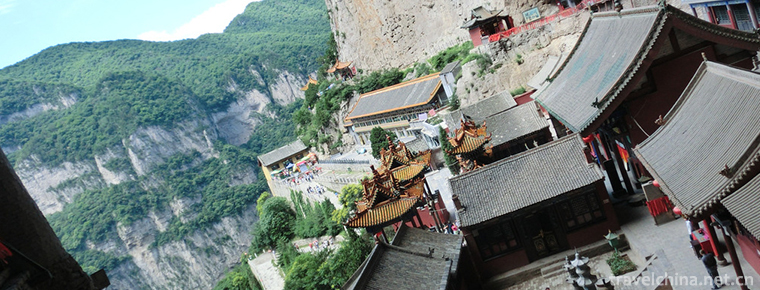
-
Town God TempleChenghuang Temple
Located in Shanghai's Huangpu District Fang Bang Road.
Views: 153 Time 2018-10-12 -
Tiger Leaping Gorge
Tiger Leaping Gorge, known as "danger", is one of the deepest canyons in China.
Views: 245 Time 2018-10-17 -
Betelnut Valley Limiao Cultural Tourist Area
Hainan Betelnut Valley Limiao Cultural Tourist Area was established in 1998. It is located in the Ganshiling Nature Reserve at the junction of Baoting County and Sanya City.
Views: 112 Time 2018-12-12 -
Mars Manor Scenic Spot
Ma's Manor, located in Xijiang Village, 20 kilometers west of Anyang City, Henan Province, is the mansion of Ma Piyao, governor of Guangdong Province in the Qing Dynasty..
Views: 144 Time 2019-02-06 -
Shenyang Science Centrum
Shenyang Science Palace is located in Wulihe Central Business District, Shenyang District, Liaoning Province. It is a large-scale modern popular science education base in Shenyang District. It was bui.
Views: 226 Time 2019-02-08 -
Liyuan Opera
Liyuan Opera is one of the traditional operas in Fujian Province. Liyuan Opera originated in Quanzhou in the Song and Yuan Dynasties. It is also called "the voice of Fujian and Zhejiang" and.
Views: 157 Time 2019-05-12 -
Lu Brocade Weaving Techniques
Lujin brocade weaving technology, traditional handmade brocade weaving technology in Juancheng County, Shandong Province, is one of the national intangible cultural heritage..
Views: 194 Time 2019-05-15 -
Miao painting
Miao painting, as one of the representatives of Miao culture in Western Hunan, has the characteristics of Miao nationality and is mainly popular in the Miao area of Western Hunan. Miao painting origin.
Views: 126 Time 2019-06-05 -
The riddle of Qinglin Temple
The number of riddles in Qinglin Temple is abundant, there are about 5000. There are many kinds of riddles, such as object riddles, event riddles and crossword riddles. Many of the riddles have high c.
Views: 115 Time 2019-06-11 -
Brewing Techniques of Fen Liquor in Xinghua Village
The brewing process of Fen liquor in Xinghua Village is complicated. Fen liquor in Xinghua Village is finally brewed through six main processes: grinding, moistening, steaming, fermentation, distillat.
Views: 125 Time 2019-07-08 -
Hydrological survey of Mianyang
Affected by the landform, Mianyang has abundant precipitation, large runoff, vertical and horizontal rivers and developed water system. There are more than 3000 rivers and gullies in the city. All rivers and gullies flow into Fujiang, Bailongjiang and Xihe.
Views: 335 Time 2020-12-14 -
Mianyang economy
In 2019, the gross domestic product (GDP) of Mianyang City will reach 285.620 billion yuan, which will increase by 8.1% according to the comparable price. The growth rate is 0.6 percentage points higher than the average level of the whole province..
Views: 130 Time 2020-12-14
